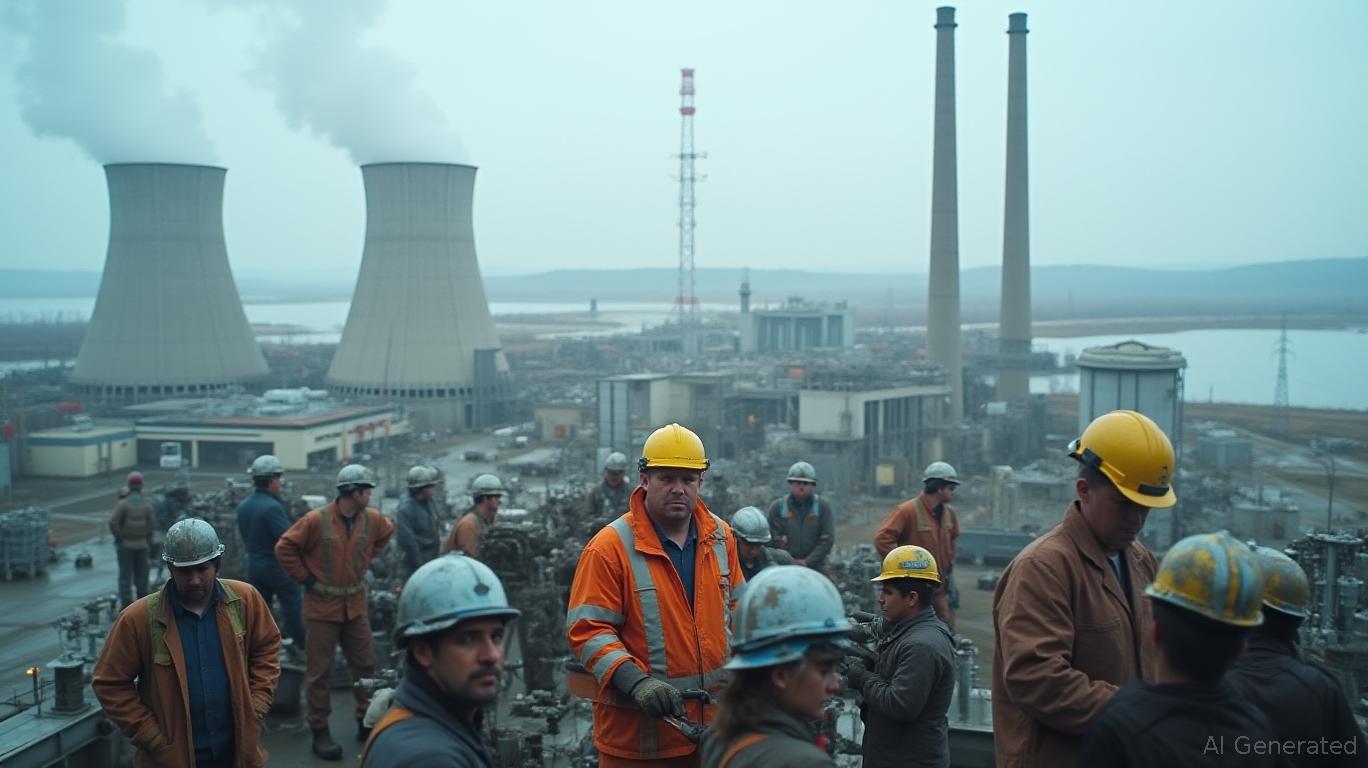Was Jim Cramer Right to Underestimate Vistra's (VST) AI-Driven Energy Play? A Growth Story Unfolding
The energy sector's shifting landscape has been a hot topic for investors, but few companies are positioned as strategically as
(VST) to capitalize on the AI revolution's insatiable demand for power. Jim Cramer, host of Mad Money, recently admitted he had underestimated Vistra's potential in this arena—a sentiment now being vindicated by the company's bold moves to align its energy assets with the needs of data centers. Let's dissect why VST's undervalued growth trajectory and AI-infrastructure play make it a compelling buy, despite broader sector headwinds.Vistra's Nuclear and Renewable Assets: The Engine of AI's Energy Future

Vistra's acquisition of Energy Harbor in 2023 added 6,400 MW of nuclear capacity—enough to power 3.2 million homes—through plants like the Beaver Valley Nuclear Power Station (PA) and Davis-Besse (OH). These assets are critical to the AI boom, as data centers require 24/7 baseload power that renewables alone can't provide. Vistra has already secured long-term PPAs with tech giants like Microsoft and Meta, supplying nuclear power to their data centers starting in 2027.
Beyond nuclear, Vistra's renewable portfolio—though smaller—complements its fossil and zero-carbon mix. Partnerships with Amazon and Microsoft on solar projects in Texas and Illinois position it to meet the diverse energy needs of AI infrastructure. Analysts project Vistra's revenue to grow at a 6.96% CAGR through 2029, driven by this strategic alignment.
Recent Earnings Revisions: A Mixed Bag with Hidden Strengths
While Vistra reported a Q1 2025 net loss of $268 million (missing EPS estimates by 61%), its adjusted EBITDA surged 53% YoY to $1.24 billion. This divergence underscores a key point: Vistra's value lies in its long-term asset plays, not short-term volatility. The Energy Harbor acquisition and rising AI data center demand are starting to bear fruit.
Despite headwinds like natural gas price declines, VST's shares have outperformed peers like NRG Energy (NRG) by 12% year-to-date. This resilience reflects investor confidence in its dual nuclear/renewable strategy.
Zacks Rank #3 (Hold) vs. Undervalued Growth: Is the Market Missing the Bigger Picture?
Vistra currently holds a Zacks Rank #3 (Hold), reflecting its mixed near-term results and elevated valuation (P/E of 25.1x vs. the sector average of 18.5x). Critics point to $15.5 billion in debt and insider selling (executives offloaded $29 million in shares in early 2025). However, the Net Debt-to-EBITDA ratio of 2.53x remains manageable, and the dividend yield of 3.2% offers downside protection.
The market's skepticism overlooks two critical factors:
1. AI-driven demand growth: Data center power needs are projected to rise at a 42% CAGR, reaching $1.3 trillion by 2023 (Bloomberg). Vistra's baseload capacity is uniquely suited to meet this.
2. Valuation catalysts: Vistra's EBITDA margin has jumped from 6.5% in 2021 to 40.4% in 2024, signaling operational efficiency. Analysts project a 33.2% CAGR in EPS through 2029, which could validate its premium valuation over time.
Contrasting Cramer's Evolving Stance: Why the Bullish Case Holds Water
Jim Cramer's admission of underestimating Vistra aligns with a broader realization: the energy sector's future is not just about fuel prices but about who controls the infrastructure powering AI. Vistra's strategic advantages—nuclear baseload, tech PPAs, and a diversified portfolio—make it a leader in this transition.
While risks like regulatory hurdles and execution of $1.9 billion in recent acquisitions remain, the company's strong free cash flow guidance ($3.0–$3.6 billion in 2025) suggests it can weather near-term storms.
Investment Takeaway: A Long-Term Play with Near-Term Opportunities
Vistra is not a “set it and forget it” investment, but its strategic alignment with AI's energy demands positions it as a key player in the coming decade. For long-term investors, consider initiating a position if shares dip below $120, leveraging the dividend yield and growth catalysts.
For short-term traders, avoid chasing near-term highs (currently $157) until Q2 earnings (due July 2025) confirm margin stability and debt management.
In conclusion, Vistra's underappreciated AI infrastructure play and growing EBITDA justify its premium valuation over the long term. As Cramer's stance evolves, so should investor perspectives—this isn't just an energy stock; it's a cornerstone of the AI economy.
Final Note: Monitor VST's July earnings report and federal policy updates on nuclear subsidies for key catalysts.

Comments
No comments yet